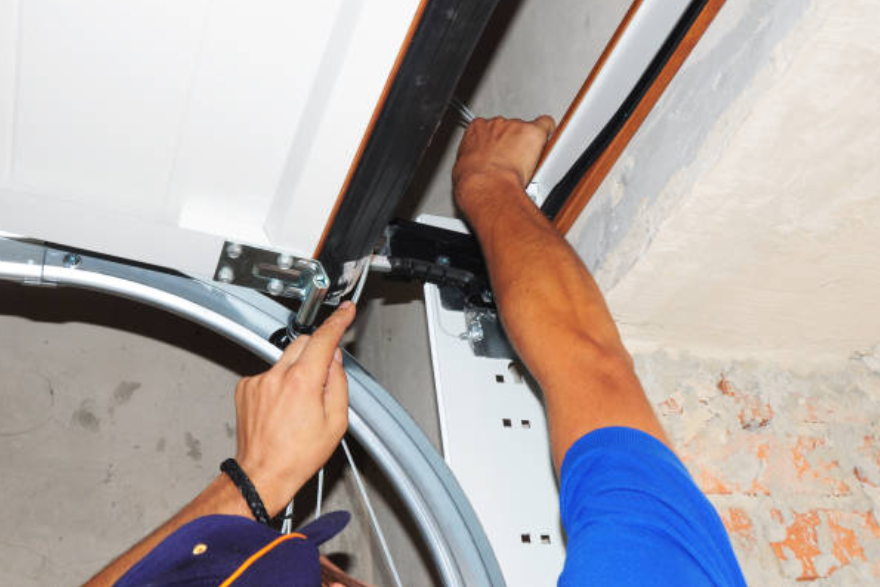How to Check Your Tire Tread
Every driver should be familiar with the process of inspecting their tire tread, but determining the correct method can sometimes be challenging. From knowing what tools to use for an accurate reading, to understanding where and why you should check your tires – there’s a lot of knowledge that goes into inspecting them properly. Knowing how to consistently assess your tire tread is not only important for safety but also essential for extending the life of your tires, too. So read on below if you want to learn the best tips and tricks for checking tire tread!

Why is Tire Tread Important?
Tire tread is undeniably important, serving as the critical interface between your vehicle and the road. This tread pattern is not just about aesthetics; it's about safety, performance, and longevity. Adequate tread depth ensures proper traction, stability, and responsive handling, especially in challenging road conditions. It also plays a pivotal role in braking effectiveness, helping prevent accidents and enhancing your ability to stop in time.
Furthermore, maintaining healthy tire tread contributes to fuel efficiency, ride comfort, and compliance with legal regulations. In essence, tire tread is a fundamental aspect of vehicle safety and performance, making regular inspections and maintenance a non-negotiable part of responsible vehicle ownership.

Step 1: Gather the Necessary Tools
Prior to starting, you'll require a handful of basic tools:
- A penny or a tread depth gauge
- A ruler or a quarter (for a quick estimate)
- A flashlight (for better visibility)
Step 2: Find a Well-Lit and Flat Surface
Position your vehicle on a flat, even surface where you have convenient access to all four tires. Verify that there is sufficient lighting, as it will facilitate the examination of the tire treads.
Step 3: Inspect Your Tires
Go to the first tire and follow these steps:
Step 4: Identify the Tread Wear Indicators
Modern tires typically have tread wear indicators, small rubber bars that run perpendicular to the tread grooves. These indicators are evenly spaced around the tire and become more visible as the tread wears down.
Step 5: Use the Penny Test
Take a penny and insert it into the tread groove with Lincoln's head facing down. If you can see the top of Lincoln's head, it's time to replace your tires. The tread is too shallow for safe driving. If Lincoln's head is partially covered by the tread, your tires still have some life left.

Step 6: Use the Tread Depth Gauge
If you have a tread depth gauge, simply place it into the groove, and it will give you an accurate measurement of the tread depth in millimeters. Compare this measurement to your tire manufacturer's recommended tread depth.
Step 7: Check Multiple Locations
To ensure an accurate assessment, check the tire's tread depth at various points around the tire, both on the inside and outside edges, as well as the center. This will help you identify any uneven wear patterns.
Step 8: Repeat for All Four Tires
Repeat the process for each tire on your vehicle. It's essential to check all tires since they may wear differently due to factors like alignment issues.
Step 9: Interpret the Results
After checking all four tires, assess the results. If any of your tires have tread depth below the recommended level, it's time to consider replacing them. Additionally, uneven wear patterns may indicate alignment or suspension issues that need to be addressed.

-
Tread Depth is Low: If the tread depth on your tires is worn down to 2/32 of an inch (1.6 mm) or less, it's time for replacement. You can use a tread depth gauge or the penny test (insert a penny into the tread, and if you can see the top of Lincoln's head, it's time to replace).
-
Uneven Tread Wear: Uneven wear patterns across the tire surface can indicate alignment issues, improper inflation, or suspension problems. Address these issues promptly and consider tire replacement if the damage is severe.
-
Cracks, Cuts, or Bulges: Examine your tires for any apparent harm, such as fissures, incisions, perforations, or protrusions on the sidewalls. Such issues can compromise the tire's structural strength and present potential safety hazards.
-
Vibrations or Shaking: If you experience unusual vibrations or shaking while driving, it may be a sign of tire balance or alignment issues. Rebalancing may solve the problem, but if the issue persists, you might need new tires.
-
Age of Tires: Tires have a recommended lifespan of around 6 years, even if they have sufficient tread depth. If your tires are older than this, consider replacing them, as the rubber can deteriorate over time, reducing grip and safety.
-
Loss of Grip in Wet Conditions: If your tires have trouble maintaining traction on wet roads or you notice increased hydroplaning, it's a sign that the tread may be worn and ineffective at dispersing water.
-
Excessive Road Noise: Unusual or loud tire noise, especially at higher speeds, can indicate tire wear. This is often associated with uneven tread wear.
-
Low Tire Pressure: Frequent low tire pressure warnings or the need to add air regularly may indicate a slow leak or damage that requires tire replacement.
-
Decreased Fuel Efficiency: A sudden drop in fuel efficiency could be attributed to increased rolling resistance due to tire wear, making the engine work harder.
-
Dashboard Warning Lights: Some modern vehicles are equipped with tire pressure monitoring systems (TPMS) that will illuminate a warning light if tire pressure is too low or if there's a tire issue. Take these warnings seriously and inspect your tires promptly.
-
Loss of Handling and Control: If your vehicle feels less responsive or has diminished handling capabilities, especially during cornering, it might be due to worn-out tires.

-
Can I check tire tread depth on a spare tire as well?
Indeed, it's advisable to inspect the tread depth of your spare tire as well. While it may not see frequent use, you'll want it to be in proper condition and road-ready should you require it during an unexpected emergency.
-
What do I do if my tire tread is below the recommended depth?
If your tire tread is below the recommended depth, it's time to replace your tires. Driving on worn-out tires can compromise your safety and vehicle performance.
See another article here: The 10 Best Slot Car Race Track Sets For Thrilling Racing Action















